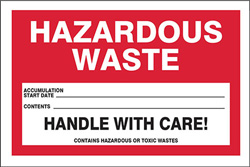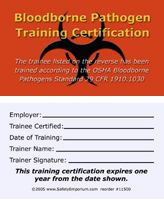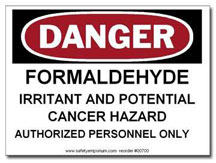| The Home page of ILPI's Safety Data Sheet (SDS) Resource, the leader in SDS information since 1995! | |
| The history and philosophy behind this resource. | |
| A curated collection of books and reference materials concerning Safety Data Sheets and closely related topics. | |
| Paste your plain text SDS into the SDS-Demystifier, and it will be converted into a hypertext-enriched document with links to detailed explanations of each key term. | |
| An extensive list of frequently asked questions about Safety Data Sheets including regulations, content, compliance, and more. | |
| A humorous take on Safety Data Sheet jargon. Fill in the blanks on our entry form to generate a personalized Unsafety Data Sheet to share with your coworkers. | |
| Since 1995, we've maintained this massive curated list of the best places to find Safety Data Sheets on the Internet. | |
| You are here! Way more than a glossary, this hypertext-enhanced resource covers hundreds of SDS-related terms and expert knowledge. Each entry includes both the SDS relevance and links to additional authoritative resources. | |
| Archived results of Safety Data Sheet related polls taken by some of our millions of site visitors | |
| The OSHA regulations behind SDS regulations, including the inspection guidelines and over 400 official interpretations letters under the Hazard Communication Standard | |
| Commercial suppliers of SDS authoring and management software as well as cloud compliance services. | |
| Commercial companies that will create SDS's for your specific needs as well as SDS translation companies. |

Safety signs, banners, and scoreboards? Get yours at Safety Emporium!
Definition
- A carcinogen is a substance that causes cancer (or is believed to cause cancer).
- A carcinogenic material is one that is known to cause cancer.
- The process of forming cancer cells from normal cells or carcinomas is called carcinogenesis.
Additional Info
A known human carcinogen means there is sufficient evidence of a cause and effect relationship between exposure to the material and cancer in humans. Such determination requires evidence from epidemiologic (demographic and statistical), clinical, and/or tissue/cell studies involving humans who were exposed to the substance in question. Obviously, it is unethical to deliberately test potential carcinogens on humans, so "proving" something (in the rigorous scientific sense) to be a carcinogen in humans is a difficult, demanding and lengthy task!
Substances that are reasonably anticipated to be human carcinogens meet any of the following descriptions:
- There is limited evidence of carcinogenicity from studies in humans. A cause and effect interpretation is credible, but that alternative explanations such as chance, bias, other variables etc. can not be ruled out. Again, science can never prove a hypothesis, only disprove one. Scientific "facts" are established only when a preponderence of the evidence supports a hypothesis and there is 1) no evidence to disprove it and 2) no equally viable (plausible) alternative hypotheses (theories).
- There is sufficient evidence of carcinogenicity from studies in experimental animals (such as mice or rats), which indicates there is an increased incidence of malignant and/or a combination of malignant and benign tumors (1) in multiple species or at multiple tissue sites, or (2) by multiple routes of exposure, or (3) to an unusual degree with regard to incidence, site, or type of tumor, or age at onset.
- There is less than sufficient evidence of carcinogenicity in humans or laboratory animals; however, the substance is structurally related to other materials that are either human carcinogens or reasonably anticipated to be human carcinogens.
- There is convincing relevant information that the material acts through mechanisms that are likely to cause cancer in humans.
A wide variety of information is required to assess carcinogenicity and risks to humans. For example, a substance may cause cancer in laboratory animals, but the mechanism by which this happens may not occur in humans.
The original 1986 and 1994 edition of OSHA's Hazardous Communication standard 1910.1200 (HCS 1994) relied on these three agencies for determining whether a chemical was a known or potential (reasonably anticipated to be a) human carcinogen:
- National Toxicology Program (NTP), "Annual Report on Carcinogens" (latest edition).
- International Agency for Research on Cancer (IARC) "Monographs" (latest editions), part of the World Health Organization (WHO).
- 29 CFR part 1910, subpart Z, Toxic and Hazardous Substances, Occupational Safety and Health Administration.
Note: The "Registry of Toxic Effects of Chemical Substances" published by the National Institute for Occupational Safety and Health (NIOSH) indicated whether a chemical had been found by NTP or IARC to be a potential carcinogen.
The determination under the old system was absolute - if the material was listed as a carcinogen by these agencies, then that determination must be reflected in the employee training, labeling, and (material) safety data sheet.
The current edition of the HazCom Standard (HCS 2012) backs off somewhat on that absolute determination schema and expands the scope of the carcinogenicity determination. While a carcinogenic hazard classification must given to the material if it is listed under 29 CFR part 1910, subpart Z per Section A.6.4.2 and the SDS author has the option of relying on the IARC and NTP data to make the classification, the author is not required to automatically classify substances as carcinogens based solely on NTP or IARC data.
Instead, the current edition uses a broad evidence-based approach which is laid out in considerable detail in Section A.6 of Appendix A to HCS 2012. Under this new schema, substances are allocated into two categories based on the strength of the scientific evidence for carcinogenicity and then additional considerations based on human cancer potential. In theory, this cuts both ways, for example, a manufacturer could argue that because the human risk is low, an IARC-listed substance might not require a carcinogenic hazard classification. On the other hand, the new approach also gives the manufacturer the ability to state that their product should be considered carcinogenic in order to fully disclose a potential hazard they have become aware of (perhaps to shield them from legal liability, for example).
According to NIOSH's Publication No. 2010-145 (May 2010), past estimates that about 4% of cancer deaths in the U.S. are caused by occupational exposures have underestimated the actual rate. For example, exposures to carcinogens in the workplace may not result in cancer until 15-40 years later.

Get your hazardous waste labels from Safety Emporium.
Books Available
NOTE: We may collect a share of sales or other compensation from the links in the following list:
- "Cancer Risk Assessment: Chemical Carcinogenesis, Hazard Evaluation, and Risk Quantification", Hardcover, 2010. Estimated price $177.38.42. Info and/or order .
- "Molecular Biology of Cancer: Mechanisms, Targets, and Therapeutics, 5th ed", Paperback, 472 pages, 2021. Estimated price $58.07. Info and/or order.
- "The Biological Basis of Cancer", Paperback, 494 pages, 2006. Estimated price $22.95. Info and/or order.
- "Textbook of Cancer Epidemiology, 3rd Ed", Paperback, 752 pages, 2018. Estimated price $113.99. Info and/or order.
- "Cancer: Basic Science and Clinical Aspects", Paperback, 418 pages, 2010. Estimated price $30.71. Info and/or order.
- "Pick Your Poison: How Our Mad Dash to Chemical Utopia is Making Lab Rats of Us All", Hardcover, 256 pages, 2011. Estimated price $16.99. Info and/or order ILPI recommended.
SDS Relevance
According to the U.S. Section A.6.3 of Appendix A to HCS 2012, any mixture that has not been tested for carcinogenic properties is considered to be carcinogenic if it contains 0.1% or more of a carcinogenic substance. Section 11 (toxicological information) of the Safety Data Sheet will warn of any known carcinogenic properties.
Use extreme caution when working with carcinogenic (or potentially carcinogenic) materials in the workplace. Minimize your exposure and be sure to consult Section 8 (exposure controls/personal protection) of the SDS for the proper personal protective equipment (PPE) to protect yourself. Find alternative procedures or materials if possible; while these may cost a little more in up-front costs, the long term savings in disposal costs, litigation etc. usually more than make up for such an expense. Proper engineering controls and adminstrative controls are definitely required when working with carcinogens or potential carcinogens!
Further Reading

Get your bloodborne pathogen safety materials from Safety Emporium.
- OSHA's information on carcinogens including recognition, evaluation, control, standards and more.
- The American Cancer Society.
- PubChem, at NIH, has information on hundreds of millions of chemicals/substances from over 700 data sources.
- The NTP's Annual Reports on Carcinogens.
- Known and suspected carcinogens, from Los Alamos National Laboratory, although from 2009, courtesy of the Internet Wayback Machine.
- NIOSH's Carcinogen List and Occupational Cancer web resource.
- The US EPA has a ToxCast Dashboard helps users examine high-throughput assay data to inform chemical safety decisions on over 9,000 chemicals as well as additional research tools.
- The OSHA Occupational Chemical Database allows one to to find all chemicals with carcinogen determinations.
See also: carcinoma, clastogen, mutagen, National Toxicology Program (NTP), teratogen.
